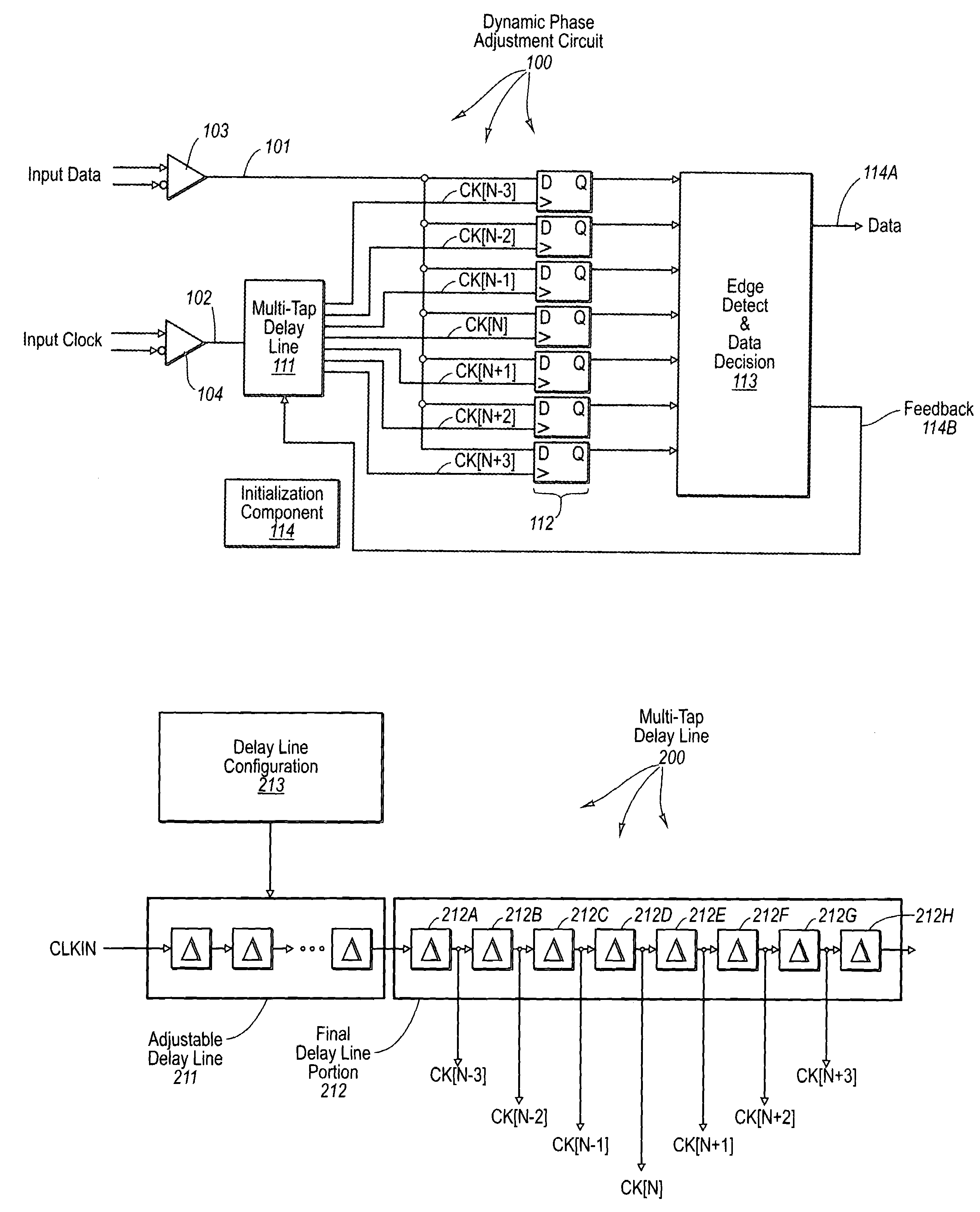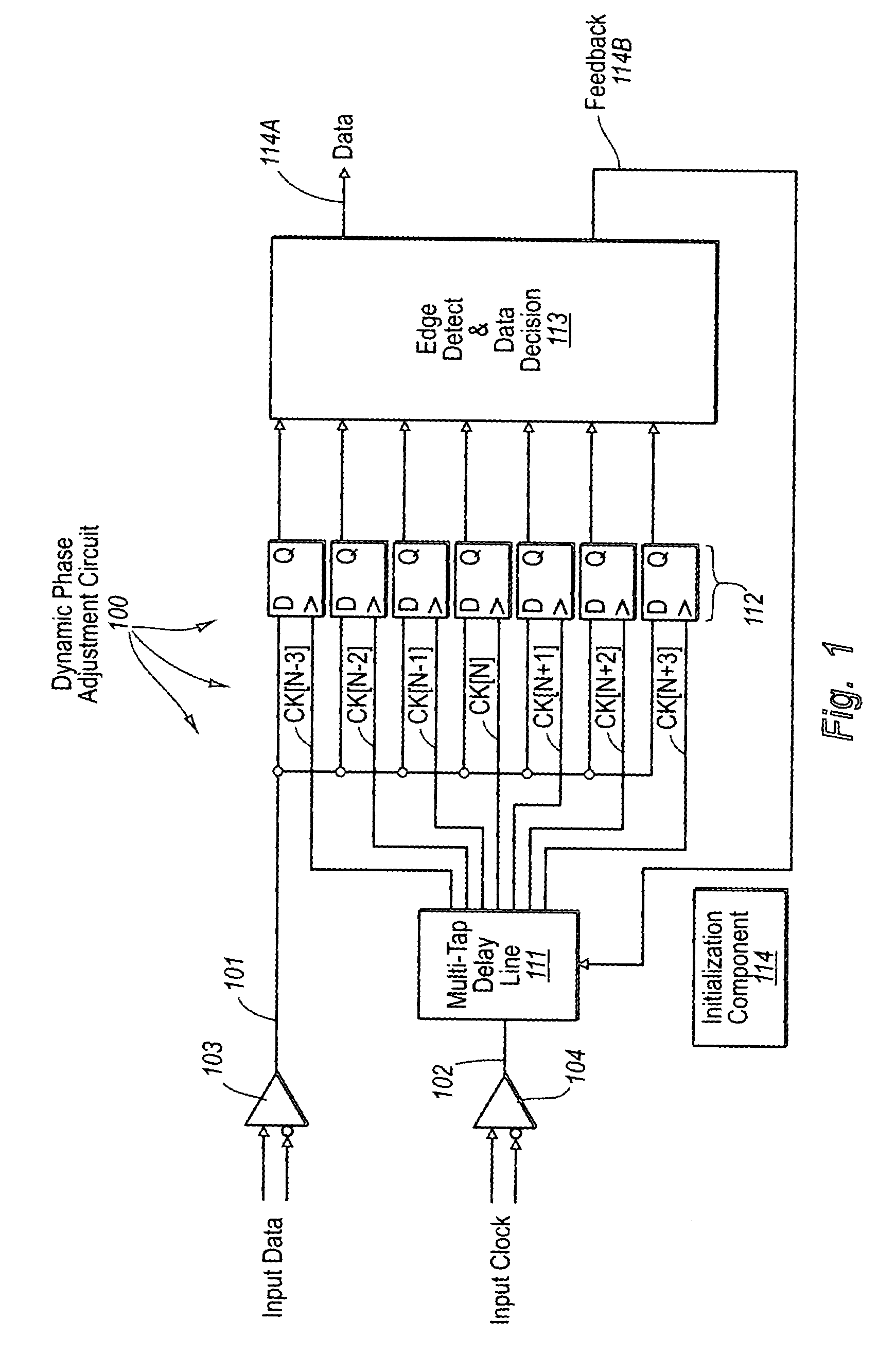Dynamic phase alignment of a clock and data signal using an adjustable clock delay line
a technology of dynamic phase alignment and clock delay, which is applied in the direction of time-delay network, digital transmission, pulse automatic control, etc., to achieve the effect of small delay and improved sampling resolution
- Summary
- Abstract
- Description
- Claims
- Application Information
AI Technical Summary
Benefits of technology
Problems solved by technology
Method used
Image
Examples
Embodiment Construction
[0023]The principles of the present invention relate to a dynamic phase adjustment circuit. Dynamic phase adjustment circuits serve to keep the phase of the clock and data signals synchronized during source synchronous data transfer so that the data may be properly sampled and interpreted at the receiving side. The dynamic phase adjustment circuit can significantly improve the sampling resolution as compared to the PLL-based dynamic phase adjustment circuit described above, while being potentially far less complex than the multi-tap delay line dynamic phase adjustment circuit also described above.
[0024]FIG. 1 illustrates a dynamic phase adjustment circuit 100 in accordance with the principles of the present invention. The dynamic phase adjustment circuit 100 includes a data input terminal 101 for receiving input data during operation, and a clock input terminal 102 for receiving clock signals during operation. When the data signal is transmitted in differential form, a differential ...
PUM
 Login to View More
Login to View More Abstract
Description
Claims
Application Information
 Login to View More
Login to View More - R&D
- Intellectual Property
- Life Sciences
- Materials
- Tech Scout
- Unparalleled Data Quality
- Higher Quality Content
- 60% Fewer Hallucinations
Browse by: Latest US Patents, China's latest patents, Technical Efficacy Thesaurus, Application Domain, Technology Topic, Popular Technical Reports.
© 2025 PatSnap. All rights reserved.Legal|Privacy policy|Modern Slavery Act Transparency Statement|Sitemap|About US| Contact US: help@patsnap.com



